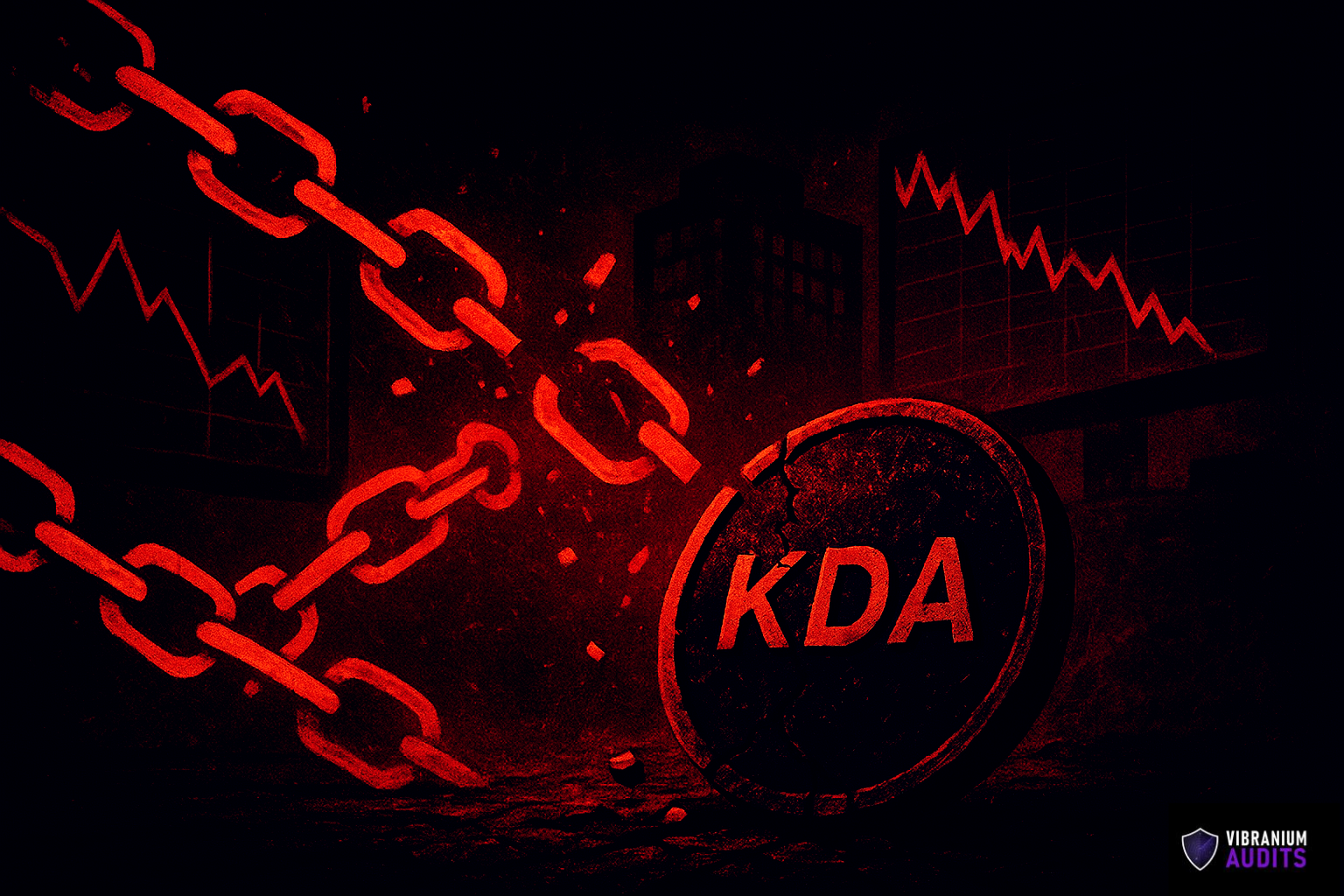Kadena, the blockchain once hailed as a “Solana killer,” abruptly announced the cessation of all business operations on October 21, 2025, sending its KDA token plummeting to $0.06, a 99% decline from its all-time high of $27.64 in November 2021. The move came after three disruptive events in just eleven days, including a global crypto market crash, a public dispute with its DEX partner Kaddex, and finally the official shutdown citing “market conditions.”
Founded by former JPMorgan engineers Stuart Popejoy and Will Martino, Kadena promised institutional-grade blockchain infrastructure, featuring Chainweb’s braided proof-of-work chains and the formally verified smart contract language Pact. Early hype and $15 million in funding pushed Kadena’s market cap briefly over $3 billion, with ambitions to provide enterprise-ready scalability and safety. However, years of stalled development, unclaimed grant money, and faltering adoption set the stage for its collapse.
Throughout 2025, Kadena announced a $50 million grant program targeting Chainweb EVM projects and real-world asset integrations, yet the only publicly known recipient, CurveBlock, received $400,000. The aggressive expansion, including hiring sprees and publicized initiatives, failed to reverse declining developer engagement or investor confidence.
The October 10 crypto market sell-off triggered by global events wiped out $19 billion across exchanges, causing KDA to drop sharply. Days later, Kaddex accused Kadena of blocking infrastructure access and migrated to Ethereum. Eleven days later, Kadena declared a complete halt to operations, with minimal advance notice. Trading volumes surged as holders scrambled to exit, erasing nearly $268 million in market value in under two hours.
While some speculate about insider positioning, no on-chain evidence, SEC investigation, or confirmed wallet activity supports wrongdoing. What remains is a story of mismanaged treasury, opaque messaging, and the sudden withdrawal of institutional support. The blockchain itself continues to operate, with 566 million KDA scheduled for distribution over the next century, but the leadership behind it is gone.










